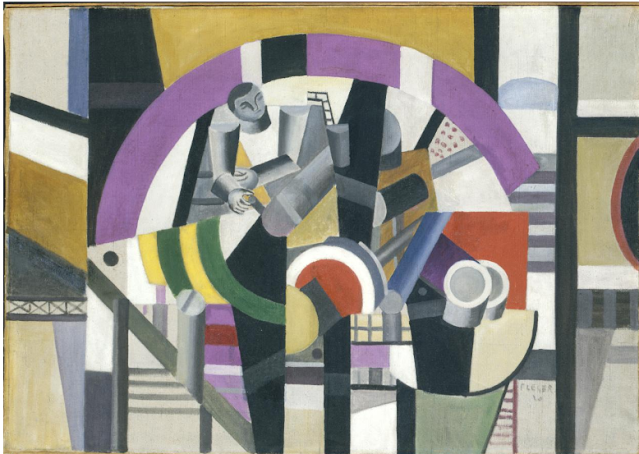Crispin and Scapin, Daumier
Crispin and Scapin by Honore-Victorin Daumier (1808-1879) has never been one of my favorites, but it's message is so powerful I thought it would be a worthwhile contrast to others we have looked at. Plus, it's message is as relevant today as it was in 1864 (circa) when it was painted. It is an oil on canvas, 24" x 32" and part of the collection of the Musee d'Orsay in Paris.
As we can see by their costumes, Crispin and Scapin were characters in French comedy. I have no information about their history, but
it has little bearing on viewing the painting today. They are on stage and the theatrical lighting casts important and harsh shadows as we see one whispering a deep secret to the other. The crossed arms and sinister grin indicate a pleased reaction. Their close connection indicates they may be partners up to no good.
Much of Honore Daumier's work was caricatures commenting on social and political life in 19th century France. Here he uses these two comic figures to project a warning, that can still be relevant today: two well known figures plotting between themselves. Are they to be trusted?
The composition is very clear. The painting is divided in half, with the background scene pulling all the attention to Crispin and Scapin.
Make Art a part of your day, it's a beautiful (and this week, interesting) thing to do.




I, too, am not a huge Daumier fan...distorted faces are bothersome even though he was commenting (politically and emotionally) on the times he lived in. The painting inspiration came from:
ReplyDeleteScapin the Schemer (French: Les Fourberies de Scapin), a three-act comedy of intrigue by the French playwright Molière. The title character Scapin is similar to the archetypal Scapino character. The play was first staged on 24 May 1671 in the Palais-Royal Theater in Paris.
Plot
Scapin constantly lies and tricks people to get ahead. He is an arrogant, pompous man who acts as if nothing were impossible for him. (kinda reminds one of the current administration). However, he is also a diplomatic genius. He manages to play the other characters off of each other very easily, and yet manages to keep his overall goal — to help the young couples — in sight.
In their fathers' absence, Octave has secretly married Hyacinthe and Léandre has secretly fallen in love with Zerbinette. But the father returns from a trip with marriage plans for the respective sons. Scapin, after hearing pleas for help, comes to their rescue. Thanks to tricks and lies, Scapin manages to come up with enough money from the parents to make sure that the young couples get to stay married. But no one knows who Hyacinthe and Zerbinette really are. It ends in the classic "And they lived happily ever after". Scapin is even brought to the head of the table at the final feast.
This one makes me chuckle. Who says men don't gossip?? But this obviously is a deeper plot happening. I like the simplicity of the whole painting with all focus on the facial expressions, and the way Crispin is leaning back to hear an evil message from his partner. The history is interesting, and yes, relevant to today's politics. I like Daumier's heavy and bold figures. They always dominate, and he catches their attitude.
ReplyDelete